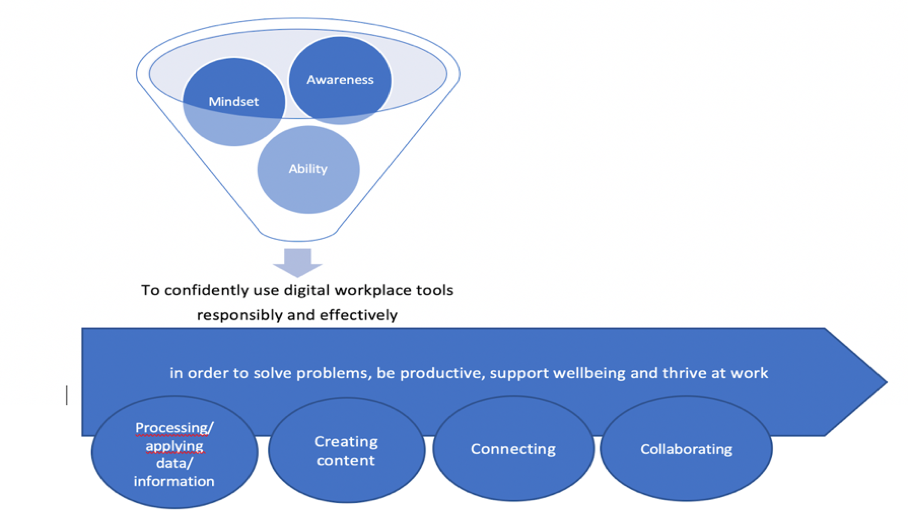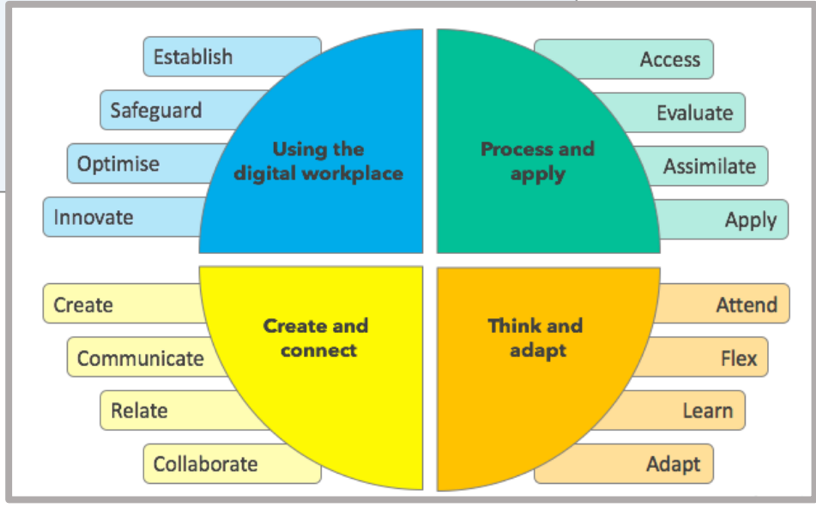BLOG Topic 1
What kind of online participation do I engage in and in what way? To what extent can I consider myself as digital literate, if at all? What kind of specific skills and attitudes do these digital activities requires? How can I become more digital literate, and finally, how can I as an educational leader support digital literacy among teachers and students?
These questions were the starting point for me going into topic 1, Online participation and digital literacies, and also part of my PBL-groups investigations. When I read the scenario for topic 1, I was thinking of our students, my colleagues and myself when starting this course, feeling insecure, although I am somewhat literate or at least capable when it comes to digital tools and communities that I usually use and inhabit. Our students are maybe part of what we call the digital native generation but are still insecure if they need to deal with other digital spaces and tools that the one they are used to. I think it’s like music, sometimes we need others to challenge and inspire us, to expand our horizon and we will find new genres.
So, I started to list my digital activity, sorting it under the four categories consuming, communicating, collaborating and creating found in the introduction of topic 1. I then compiled my own four-field map inspired by David White, considering me being a visitor or a resident in those digital spaces I use. It became obvious that I’m more of a consumer than a creator. Still, I both communicate and collaborate to a high degree, mostly in my professional life. So why? I realise that questions connected to ethics, both formal rules like copyright law, my own university’s guidelines, but also my lack of knowledge about what and how I can re-use, or re-mix and share becomes a limitation. I am afraid doing something wrong or illegal, or maybe offend someone or make a statement that are interpreted wrong and therefore would put me in a bad light. This albeit the fact that I’m a sharer and quite outspoken the IRL word. Anyhow, let us focusing digital literacies and re-mixing as one aspect.
As you probably have seen, Dough Belshaw points out eight essential elements of digital literacies in his ted-talk, what I would call Digital literacies as the eight C’s; cognitive, construction, communication, civic, critical, creative, confident and cultural. He also emphasises the re-mix of different sources.
 Pictures from the presentation in the ted-talkhttps://www.youtube.com/watch?v=A8yQPoTcZ78&ab_channel=TEDxTalks
Pictures from the presentation in the ted-talkhttps://www.youtube.com/watch?v=A8yQPoTcZ78&ab_channel=TEDxTalks
This re-mix is a main part of being a creator rather than consumer, at least if you don’t produce all your pictures and ideas by yourself. Even if it is okey to re-mix within certain boundaries, my feeling is that this can easily be both offending and unethical. I think ethical and critical awareness is one of the most urgent aspects of digital literacies. In our PBL-presentation we write that critical, ethical and ethnical awareness includes a wide range of issues, from critically evaluate websites and sources, be aware of copyright law, state original sources, to questions about netiquette, responsibilities and respecting others integrity and wellbeing. All of those are connected to society, cultures and values and are as such also changing over time. (cf Aranda, 2007; Cennamo et al, 2010; EDUCAUSEreview/Ortega, 2020; Hawley Turner, 2020; Olcott, Farran, Echenique, & Martinez, 2015).
Talking about the meaning of digital literacies, I want to stress a few frameworks or models that our group came up with after doing some investigation. The first we called Digital literacy as Awareness, Mindset and Ability, and it looks like this in our interpretation:

This illustration is built upon following definition by Martin & Grudziecki (2006) quoted by Elizabeth Marsh here:
“Digital literacy in the workplace is the awareness, mindset and ability of individuals to confidently use digital workplace tools responsibly and effectively in order to solve problems, be productive, support well-being and thrive at work by processing and applying information and data, creating content, connecting and collaborating with other people, and reflecting on and adapting one’s digital practices.”
Further investigation showed that Elizabeth Marsh had developed a framework for Digital skills in workplaces and also a way of assessing these skills. See figure below. She argues that poor digital skills hinder the progress of digital workplaces in organisations. In the folder The Digital Workplace Skills Framework (© Digital Work Research, 2018) she explains some crucial areas of skills as you can see in the figure below, which she also elaborate further on in the framework, resulting in four main skills within each area and how these can be supported in organisations.

In this framework re-mixing is also stressed as a main skill: “Create new resources in a range of formats, either from scratch or by re-mixing existing digital artefacts” (© Digital Work Research, 2018). When assessing my own digital literacy, I realise that re-mixing is crucial for me to develop, as I pointed out above. I need to learn more about openness and sharing, what and how, in order to feel secure enough to dare challenging myself and become a creator in a higher extent.
Why re-mixing? Beside the fact that it is considered a skill in digital literacies, and that our digital world requires some kind of digital literacy, I would also argue that internet and the web can be regarded a rhizome with multiple beginnings and no ends or hierarchical structures. This is a metaphor that can also be used for learning seen from a new-materialist/ post-humanist perspective (see Deleuze & Guattari, 1987; Deleuze & Parnet, 2006 for the concept of rhizome). You can also read a blogpost of Bluemink here about the web as a rhizome here.
Connected to the web we inter-act with other people synchronously or asynchronously, as well as we intra-act with matters and materiality. Matters can be considered as active agents, may it be computers, sites, words, pictures or thoughts and so on (see Barad, 2007 for the concepts of active agents and intra-actions). In that way we are always involved in ongoing processes of becoming where we, the matters and materiality are mutually affecting and affected by each other. As such, I am already involved in re-mixing, creating, re-creating and becoming, by following threads, interpreting information and re-thinking myself and my knowledge and actions. Deleuze and Guattari stress collaborative writing and decentralised knowledge as part of a rhizomatic learning, and I have myself enjoyed being in such processes in my research, collaborating and writing papers digitally. You can read one here, Philosophical reimaginings of educational places and policy: Through the metaphor of a wardrobe (Alerby, Arndt & Westman, 2019), where we provoke diverse ways of thinking about the complexities of shifting, expanding, constantly evolving educational spaces and places where digital learning environments are one.
How and what can be remixed? Although I’m involved in ongoing processes of becoming and re-mixing, I don’t openly share all my re-mixed creations due to the heavy burden of responsibility and my fear of messing up, and even worse, that my digital fot-steps forever would show these mistakes. Such a coincidence that Creative Commons are part of the next topic – lucky me! Still, I think it is really important to consider what Oxley (2010) points out: “Freedom of Speech does not equate to freedom of consequences…” (p. 3).
To be continued…Thank you for reading!